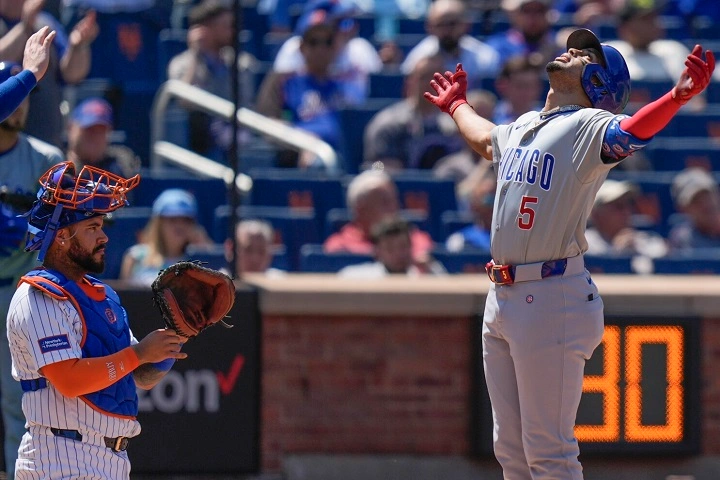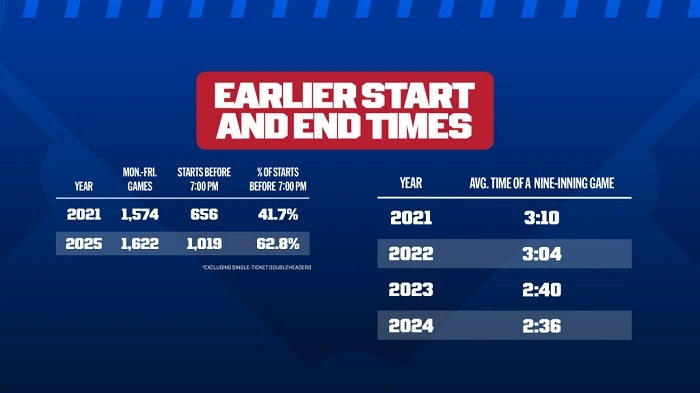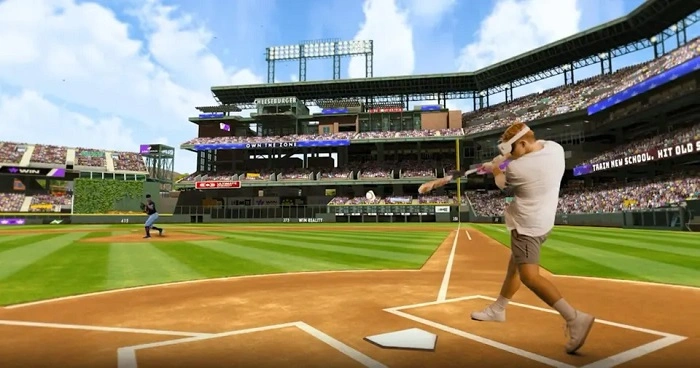You’ve heard the debate in bleachers and group chats: how long is the average baseball game? Some say it crawls. Others say it flies now. The truth sits in the middle—and it’s friendlier than ever. Rules trimmed the dead time. Pitchers and hitters move with purpose. Games breathe. In this guide, we’ll answer your question simply, then layer in the real-world variables that stretch or shrink a night at the diamond. We’ll talk MLB, college, minors, high school, even Little League. We’ll map pregame rituals, concessions, extra innings, rain delays, and playoff drama. By the end, you’ll know exactly how long to block on your calendar—and how to enjoy every minute.
The Quick Answer (So You Can Plan)
If you’re asking how long is the average baseball game in today’s MLB, the clean, modern reply is about two and a half hours—give or take ten to fifteen minutes on most nights. College games still tend to land closer to three hours, high school games around two, and youth games often finish in ninety minutes to two hours. That’s the headline. But the scoreboard, the weather, and the stage can shift any single game by half an hour either way.
Why MLB Got Faster (And More Watchable)
The pitch clock
The biggest change. A clock between pitches forced everyone to stop dawdling. Pitchers work, hitters stay set, and innings flow. You feel it immediately—less waiting, more baseball.
Fewer dead moments
Limits on mound visits and pickoff attempts trimmed tiny delays that used to stack up. Batters can’t step out and re-lace their gloves six times. Managers move quicker. Broadcasters do, too.
Better rhythm
When your eyes don’t wander, the game feels shorter—even when it isn’t. That’s why the answer to how long is the average baseball game isn’t just a number; it’s the sensation of steady action.
Anatomy of Nine Innings (Where the Minutes Go)
Innings 1–3: The settling
Starters test the zone. Umpires find the edges. Expect 40–50 minutes if things are normal. A long half-inning with walks or an error can tack on ten.
Innings 4–6: The turn
Lineups see pitchers a second time. Managers consider the bullpen. Another 40–50 minutes here if pace holds.
Innings 7–9: The leverage
Pinch hitters. Defensive swaps. Closers. Drama stretches clocks. Figure 45–55 minutes, with late pitching changes adding a few minutes each.
Add it up and you’re in that 2:30-ish window for a typical MLB night. The calendar matters, though. Weeknight regular-season games tend to be tighter. Weekend fireworks nights, ceremonies, and rivalry series can push longer.
What Speeds a Game Up (and What Slows It Down)
Faster
- Pitchers pounding the zone
- Early-count contact and few deep counts
- Minimal mid-inning pitching changes
- Brisk replay decisions
- Cold air or heavy air (suppresses home runs and big innings)
Slower
- Big scoring frames (walks, errors, long at-bats)
- Frequent mound visits or injuries
- Multiple pitching changes in a single inning
- Lengthy replay reviews and challenges
- Hot, dry air with the ball flying (hello, five-run innings)
If you want a quick rule for how long the average baseball game is tonight, look at the starters’ control and the bullpen’s freshness. Strike-throwers and rested relievers usually mean a fast night.
Extra Innings, Tiebreakers, and the Final Stretch
Regular-season extras in the pros now move faster thanks to the runner-on-second rule. That rule turns the 10th into a sprint rather than a marathon, so 10–11 inning games often still wrap around the three-hour mark. Postseason is different—every pitch is a story, and the runner rule usually disappears. Playoff extras can climb past four hours when managers chase microscopic edges.
Comparing Levels: MLB to Little League
MLB (Major Leagues)
Average around 2.5 hours. National TV games, ceremonies, or packed bullpens can push longer, but the new pace sticks.
Minor Leagues
Often a touch shorter, 2:20–2:40, because the same pace-of-play rules are in effect and the broadcast flow is simpler.
College Baseball
Higher-scoring environments, more free passes, and coaching tempo often land near three hours. Tournament games can stretch, especially with frequent mound trips or replay.
High School
Seven innings, fewer pitching changes, simpler broadcasts. Expect around two hours most days.
Youth/Rec (including Little League)
Six innings, time limits, run rules. Most finish in 90–120 minutes. Bring sunscreen, a folding chair, and a smile.
If someone asks you how long is the average baseball game at each level, you can answer in one breath: two and a half (MLB), three (college), two (high school), ninety-ish to two (youth).
Ballpark Reality vs. TV Reality
At the ballpark
The experience is longer than the game itself. Plan 30–40 minutes for arrival, security, and seats. Between-innings promos add color but also minutes. Concessions can cost you half an inning. Exiting with the crowd adds 10–20 minutes. Gate-to-gate, a “2.5-hour game” is often a 3.5–4-hour outing—and worth every minute if you lean in.
On TV or streaming
You get the pure clock: about 2.5 hours of first pitch to last out, plus optional pregame and postgame shows. Fewer lines. More angles. If you’re planning family bedtime or a second-screen study session, the TV version is the most predictable answer to how long is the average baseball game.
Weather, Altitude and Time of Day
Weather
Heat can stretch innings with more offense and more hydration pauses. Cold can shorten them with fewer hits—and a few numb fingers that ask for mound visits. Rain delays rewrite the script entirely. Always have a Plan B for a wet forecast.
Altitude
Thin air turns deep flies into souvenirs. That means more runs, longer innings, and a game that inches past the average. Electric, but slower.
Day vs. night
Day games can feel crisper—fewer pregame ceremonies and a get-in/get-out vibe. Night games are events: anthems, tributes, fireworks, theme nights. Beautiful. A touch longer.
The Hidden Time Thieves (And How to Outsmart Them)
- Replay challenges: Necessary, but they bite small chunks. Tip: stretch, hydrate, chat.
- Mid-inning pitching changes: Each one adds a few minutes. Tip: time your concessions for the first pitch of the next half-inning instead.
- Promotions: Great fun, especially with kids. Tip: preview the promo schedule so you know which nights have longer intros or postgame fireworks.
Playoffs: When “Average” Stops Caring
October baseball ignores your planner. Managers play matchup chess. Every at-bat can last eight pitches. Broadcast windows stretch for storytelling. A “typical” playoff game can easily nudge three hours, and extra innings can whisper four. It’s worth it. Just plan for a late bedtime.
Pace of Play vs. Pace of Action
Yes, the clock trims downtime. But the spirit of baseball is still intact. You get more balls in play per minute, spikes of tension, and less fidgeting between moments. When a friend asks how long is the average baseball game now, you can say: shorter than it used to be—and better for it.
Planning Templates (So You’re Never Rushed)
Weeknight MLB game (first pitch 7:05)
- 6:20 Park and enter
- 6:35 Find seats, grab food
- 7:05–9:40 Game window
- 9:40–10:00 Exit flow
Block: ~3.5 hours total
Weekend day game (1:10 start)
- 12:30 Arrive, stretch, snag photos
- 1:10–3:45 Game window
- Postgame Kid runs the bases or fireworks? Add 30–45 minutes
Block: ~3.5–4 hours
With kids
Sit near an aisle. Stack snacks early. One bathroom trip right after the third out is your friend. Leave by the mid-8th if bedtime rules your house. Memory > last pitch.
With a big group
Group tickets? Arrive earlier. Text a seating map. Pick a meeting spot for late arrivals. Big groups take longer to settle; a little extra time buys you calm.
Common Myths, Gently Fixed
“Baseball always takes three-plus hours.”
Not anymore. The typical MLB game now lands closer to two and a half.
“The pitch clock ruined the sport.”
It trimmed filler, not the soul. Strategy, chess, heartbeat—they all remain.
“Short games mean less offense.”
Not necessarily. Pace and scoring aren’t the same thing. A 6–5 game can finish quicker than a 3–2 walk-fest if the ball is put in play early in counts.
“Extra innings = five-hour ordeal.”
In the regular season, tiebreak rules push extras to finish quicker. Postseason is the rare marathon—plan accordingly.
If You’re New, Here’s How to Watch the Time Like a Pro
- Scan the starters. Strike-throwers equal pace.
- Watch catcher tempo. Fast signs, fast game.
- Count mound visits. Few visits, fewer delays.
- Notice the ump. A wide, consistent zone shortens at-bats; a tight, shifting zone lengthens them.
- Track reliever usage. Multi-inning relievers speed a game; mid-inning specialists slow it.
This mini-checklist quietly predicts how long is the average baseball game tonight—with surprising accuracy.
Where the Trend Is Headed
Expect MLB to hold near that 2.5-hour comfort zone. College baseball will keep tuning its tempo. The minors will continue as baseball’s laboratory. Youth will stay short and joyful. The game learned to breathe faster. Fans noticed. Broadcasters noticed. Players adjusted. That’s a rare win-win.
The One-Line Answer You Can Give a Friend
“How long is the average baseball game? About two and a half hours in the majors now—plan three with arrivals and exits, longer for college, shorter for high school.”
FAQs
How long is the average MLB game right now?
Roughly two and a half hours. Some finish at 2:15, others nudge past 2:45, but that’s the modern neighborhood.
Why do college games feel longer than MLB games?
More scoring, more mound trips, and developing pitchers stretch innings. Three hours is common, especially in conference play and tournaments.
How much time should I budget for the full ballpark experience?
Plan 30–40 minutes pregame, the 2.5-hour game window, and 10–20 minutes to exit. That’s 3.5–4 hours overall.
Do playoff games really take longer?
Yes. Strategy and stakes slow the pace. Three hours is common; extra innings can go much longer. Worth every nerve.
What’s the shortest realistic pro game?
A crisp pitcher’s duel can wrap close to two hours if both starters attack the zone and defenses play clean.



